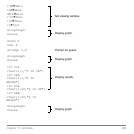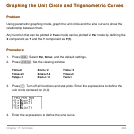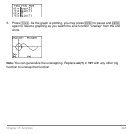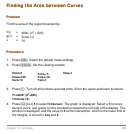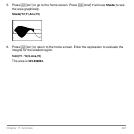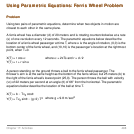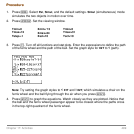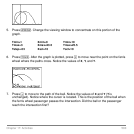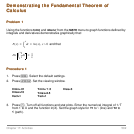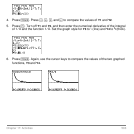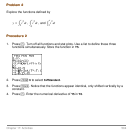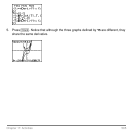
Chapter 17: Activities 498
Using Parametric Equations: Ferris Wheel Problem
Using Parametric Equations: Ferris Wheel ProblemUsing Parametric Equations: Ferris Wheel Problem
Using Parametric Equations: Ferris Wheel Problem
Problem
ProblemProblem
Problem
Using two pairs of parametric equations, determine when two objects in motion are
closest to each other in the same plane.
A ferris wheel has a diameter (d) of 20 meters and is rotating counterclockwise at a rate
(s) of one revolution every 12 seconds. The parametric equations below describe the
location of a ferris wheel passenger at time T, where a is the angle of rotation, (0,0) is the
bottom center of the ferris wheel, and (10,10) is the passenger’s location at the rightmost
point, when T=0.
A person standing on the ground throws a ball to the ferris wheel passenger. The
thrower’s arm is at the same height as the bottom of the ferris wheel, but 25 meters (b) to
the right of the ferris wheel’s lowest point (25,0). The person throws the ball with velocity
(v
0
) of 22 meters per second at an angle (q) of 66¡ from the horizontal. The parametric
equations below describe the location of the ball at time T.
X(T) = r cos a
Y(T) = r + r sin a
where a = 2pTs and r = dà2
X(T) = b N Tv
0
cosq
Y(T) = Tv
0
sinq N (gà2) T
2
where g = 9.8 m/sec
2





